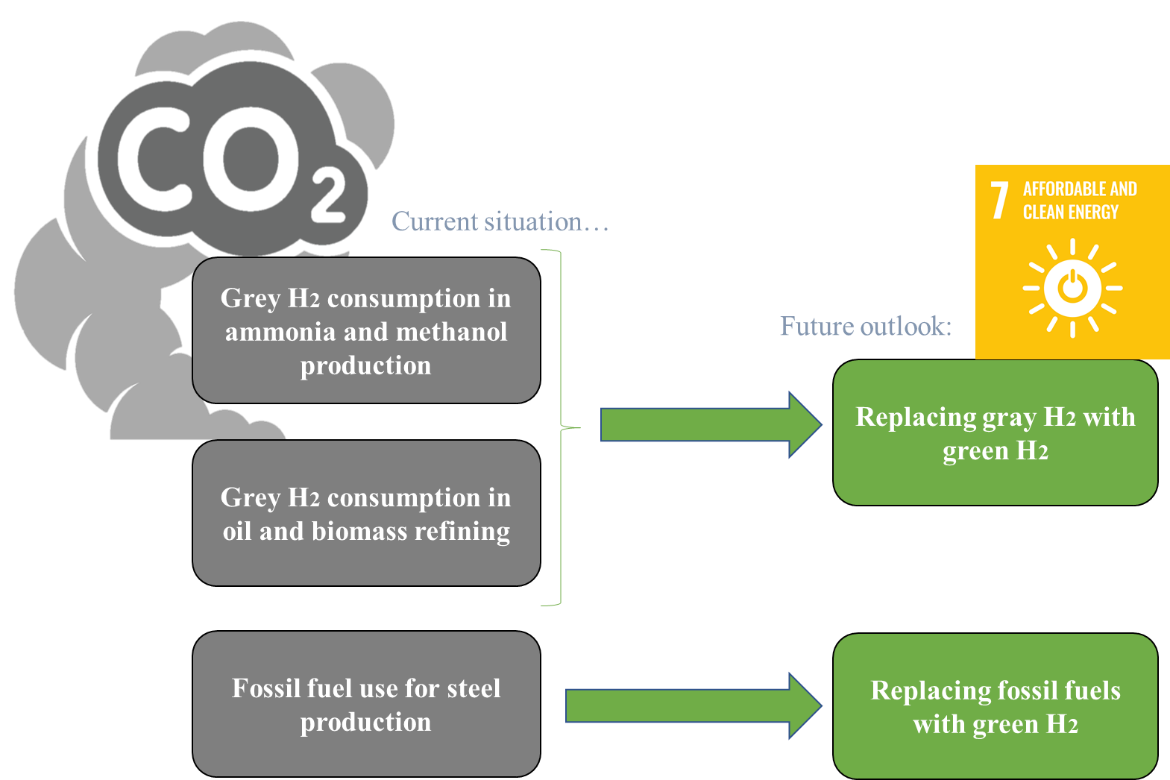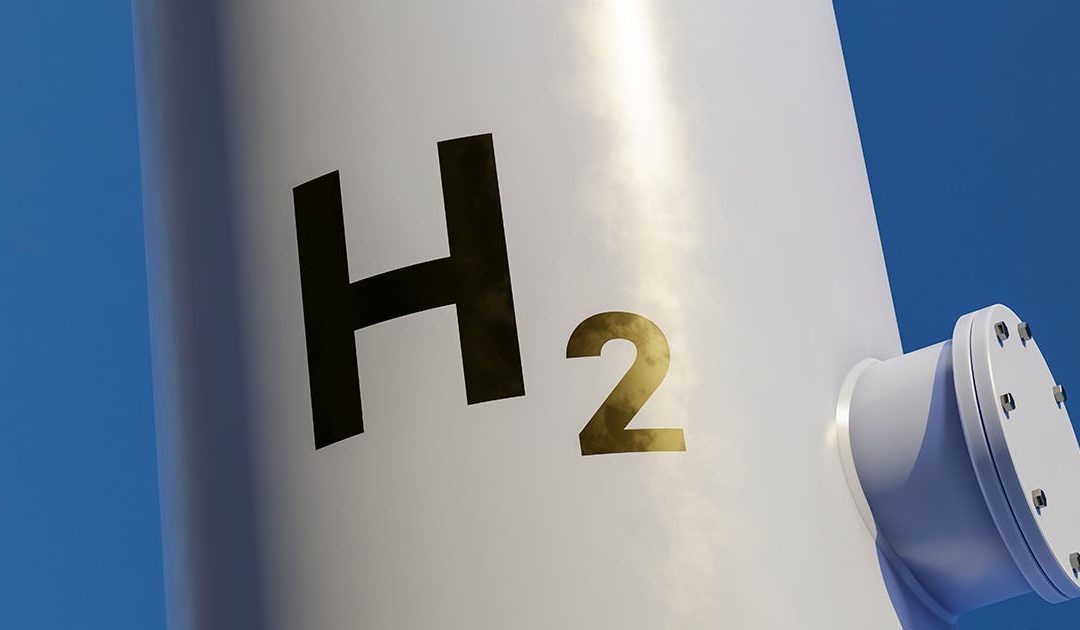Source: Markusgann
The energy transition to decarbonization is the process of progressively replacing the global energy system based on fossil fuels with a system based on energy sources which do not generate net positive emissions. There are very different transition schemes, depending on the target technology matrix (inclusion of nuclear and/or carbon capture and storage, distributed vs. centralized generation, etc.), as well as in relation to the ownership of energy production systems (relative weight of large corporations vs. cooperatives or energy communities).
Energy transitions are taking place in the context of the current energy and environmental crisis, marked mainly by the use of fossil fuels. In this regard, the EU has identified hydrogen as a “key sustainable solution” for achieving climate neutrality by 2050 and, more specifically, the industrial sector as a “key driver” for accelerating the technological development of hydrogen in its emission-free form (i.e. green hydrogen). The options for this chemical element for decarbonization include using green hydrogen (generated by renewable electricity) to replace grey hydrogen (produced from polluting sources) and/or as an alternative to the fossil fuels used in specific industrial processes (see Figure 1).

Figure 1. Hydrogen options for decarbonization. Source: own elaboration.
With regard to the technological development of green hydrogen, the role of policy makers is key. Therefore, it is particularly interesting to dispose of a tool that facilitates decision making. In this sense, in GEEDS we thought it was necessary to get involved in this issue with the aim of analyzing the future prospects of hydrogen and the consequences of its use on a large scale; in particular, the topic of this post focuses on the uses of hydrogen at industrial level in the European Union, which is a summary of the Final Degree Project “System Dynamics Modeling of the Hydrogen Sector in the Energy Transition”.
What is the current situation of the hydrogen sector and what are its future prospects?
The current outlook for the hydrogen sector is described from the point of view of demand and generation; hydrogen demand can be classified into current and potential uses:
- Current uses: emissions come exclusively from the industrial sector, with applications in the chemical industry for the production of ammonia and methanol (50% of total demand), in the oil industry for the refining of crude oil (44% of total demand), and in the steel industry for the production of primary steel.
- Potential uses: in the industrial sector, demand is expected to be associated with the production of biofuels (biomass refining) and the production of steel using only hydrogen as a raw material. There may also exist other non-industrial applications in the transport, residential or electricity sectors. These latter applications, unlike the previous ones, do not use hydrogen as a raw material but as an energy source.
For hydrogen generation, production technologies depend on the feedstock, that is, fossil fuels (natural gas and coal), biomass or electricity. The most important processes at present are steam steam reforming from natural gas (SMR) and coal gasification. Biomass and electrolysis production routes are incipient and developing technologies. Within the EU, hydrogen generation currently takes place only from SMR, while the most promising alternative for decarbonization is electrolysis.
Which are the energy requirements for the deployment of green hydrogen in the EU industry? Which are its associated emissions?
This analysis has been carried out by building a System Dynamics model (available in the UVa repository) that has allowed us to estimate the energy requirements, materials and CO2 emissions associated with the hydrogen industrial sector under different future scenarios. Given the current uses of hydrogen in industry and its future prospects, the processes that involve hydrogen as an energy source (transport, residential sector, etc.) have not been taken into account in this study and, therefore, the future hydrogen consumption would be even higher if the rest of the non-industrial sectors are considered.
In order to perform the study, we have analyzed 5 scenarios to assess possible future developments: a base scenario that evolves according to current trends and three scenarios of electrolytic hydrogen deployment that differ between them in terms of emissions associated with the electricity mix, speed of technological development and inclusion of different sectors in the demand, and an additional scenario of decrease.
Overall, our results show that the environmental benefits of deploying green hydrogen are highly dependent on the emissions associated with the energy mix in the grid: under current trends of grid decarbonization, green hydrogen is not a better option than grey hydrogen in terms of emissions until 2040, due to the high emissions associated with electricity consumption to produce hydrogen until then. Only in the most optimistic cases of decarbonization of the electricity mix there is a clear advantage of green hydrogen over grey hydrogen.
According to our estimations, the electricity consumption that would result from the use of green hydrogen in the industrial sector would be much higher than the current renewable generation capacities, consuming, in the scenario with the highest demand for H2, around 50% of the electricity generated in the EU today by 2050 (hydrogen would be positioned as the main consumer of electricity). Given these numbers, an open question emerges about future generation capacity; it must be ensured that sufficient installed power is available to supply such a demand from a specific sector as the hydrogen industrial sector.
Water consumption in the sector due to the production of green hydrogen leads to a considerable increase compared to the current situation with grey hydrogen, up to a threefold or even fivefold increase, depending on the scenario. This increase in consumption could have relevant implications on this important seasonal resource, especially in those regions (southern Europe) where desertification is a potential hazard.
However, it is not all bad news; a relevant conclusion that has been drawn is the great effectiveness of hydrogen to decarbonize the steel sector in substitution of the coking coal currently used. In any of the scenarios the results are promising.
In conclusion, despite its advantages, the use of green hydrogen in industry has a number of very serious drawbacks: in addition to high water consumption and high dependence on the electricity mix, electricity consumption is a serious concern given its high magnitude, do we really have enough energy? Bearing in mind that this is a very specific sector, what consumption would we reach if we apply hydrogen in the residential sector or in transport? Is it really worthy?
Continuing along these lines, from GEEDS we will try to answer the above questions, we will continue our research on hydrogen and studying its contribution, risks and impacts during the energy transition.
Author: Juan Manuel Campos Rodríguez
References
Campos Rodríguez, J. M. (2022). Modelado en Dinámica de Sistemas del Sector del Hidrógeno en la Transición Energética [Trabajo Fin de Grado, Universidad de Valladolid].
https://uvadoc.uva.es/handle/10324/54409



